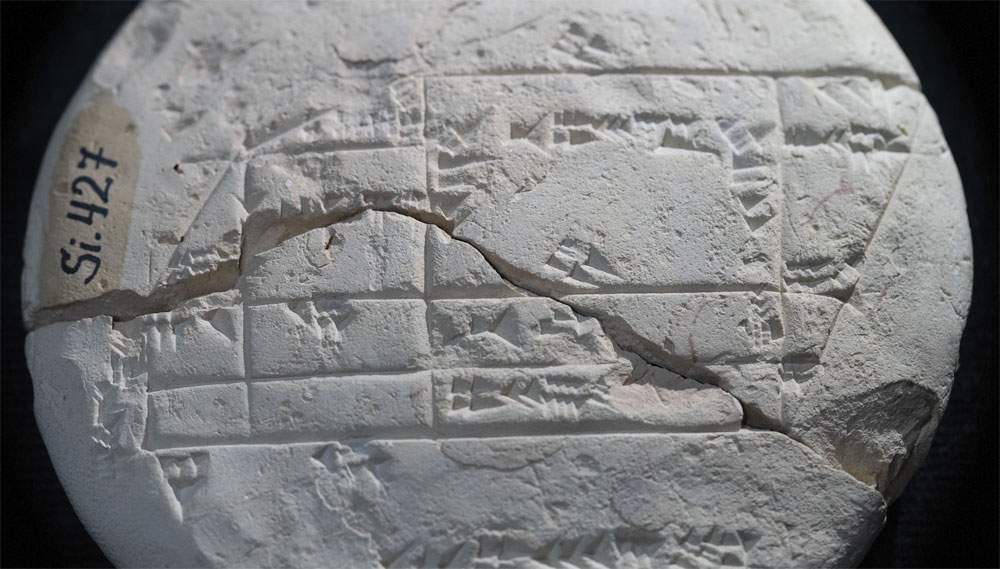A mathematician at the University of New South Wales has unraveled the origins of applied geometry on a 3700-year-old clay tablet.The tablet, known as Si.427, was discovered in the late 1800s in the area of what is now central Iraq, but its significance remained unknown until now, when Daniel Mansfield ’s research was made known. The find is preserved in the Istanbul Archaeological Museum.
Si.427 is considered the oldest known example of applied geometry, and in the study published in Foundations of Science, the research also reveals a compelling human story. “Si.427 dates to the Old Babylonian period, 1900 to 1600 B.C.,” says lead researcher in the School of Mathematics and Statistics at the University of New South Wales, Daniel Mansfield. "This is the only known example of a cadastral document from the Old Babylonian period, which is a plan used by surveyors to define land boundaries. In this case, it reveals to us legal and geometric details about a field that was divided after part of it was sold.“ He adds, ”From the discovery and analysis of the tablet come important implications regarding the history of mathematics, since this find dates back more than a thousand years before the birth of Pythagoras."
The clay tablet is from 1900-1600 B.C. and was made by a surveyor in ancient Babylon, on which the latter wrote with a stylus. The lines present represent a field that is divided and part of it sold: the lines therefore delineate the very precise boundaries of the different fields. The ancient surveyor used Pythagorean terns, making the boundary lines perfectly perpendicular. On the back of the tablet we see a text in cuneiform writing in which details such as the dimensions of the field are described. The reason for the presence of large numbers at the bottom of the back of the tablet remains to be solved.
In 2017 Mansfield had discovered another similar object, called Plimpton 322: a unique type of trigonometric table. Si.427 is thought to predate Plimpton 322. Si.427 makes it clear for the first time why the Babylonians were interested in geometry, namely to establish precise land boundaries. Presumably this was aimed at having good neighborly relations, as one sees a field being divided and new boundaries created. “No one expected the Babylonians to use Pythagorean triples in this way,” says Dr. Mansfield. “It’s more like pure mathematics, inspired by the practical problems of the time.”
Daniel Mansfield first learned about Si.427 through excavation documents: the tablet was unearthed in 1894, in what is now Baghdad province in Iraq. “It was a real challenge to physically find the tablet,” he concludes; "talking to many people in Turkish government ministries and museums, finally one day in mid-2018 a picture of Si.427 arrived in my mailbox. That was how I learned that it was on display at the Istanbul Archaeological Museum. Even after locating the object, it took months to fully understand how significant it was, so it is really satisfying to finally be able to share this story."
 |
| On a tablet the oldest example of applied geometry: discovery by an Australian mathematician |
Warning: the translation into English of the original Italian article was created using automatic tools. We undertake to review all articles, but we do not guarantee the total absence of inaccuracies in the translation due to the program. You can find the original by clicking on the ITA button. If you find any mistake,please contact us.